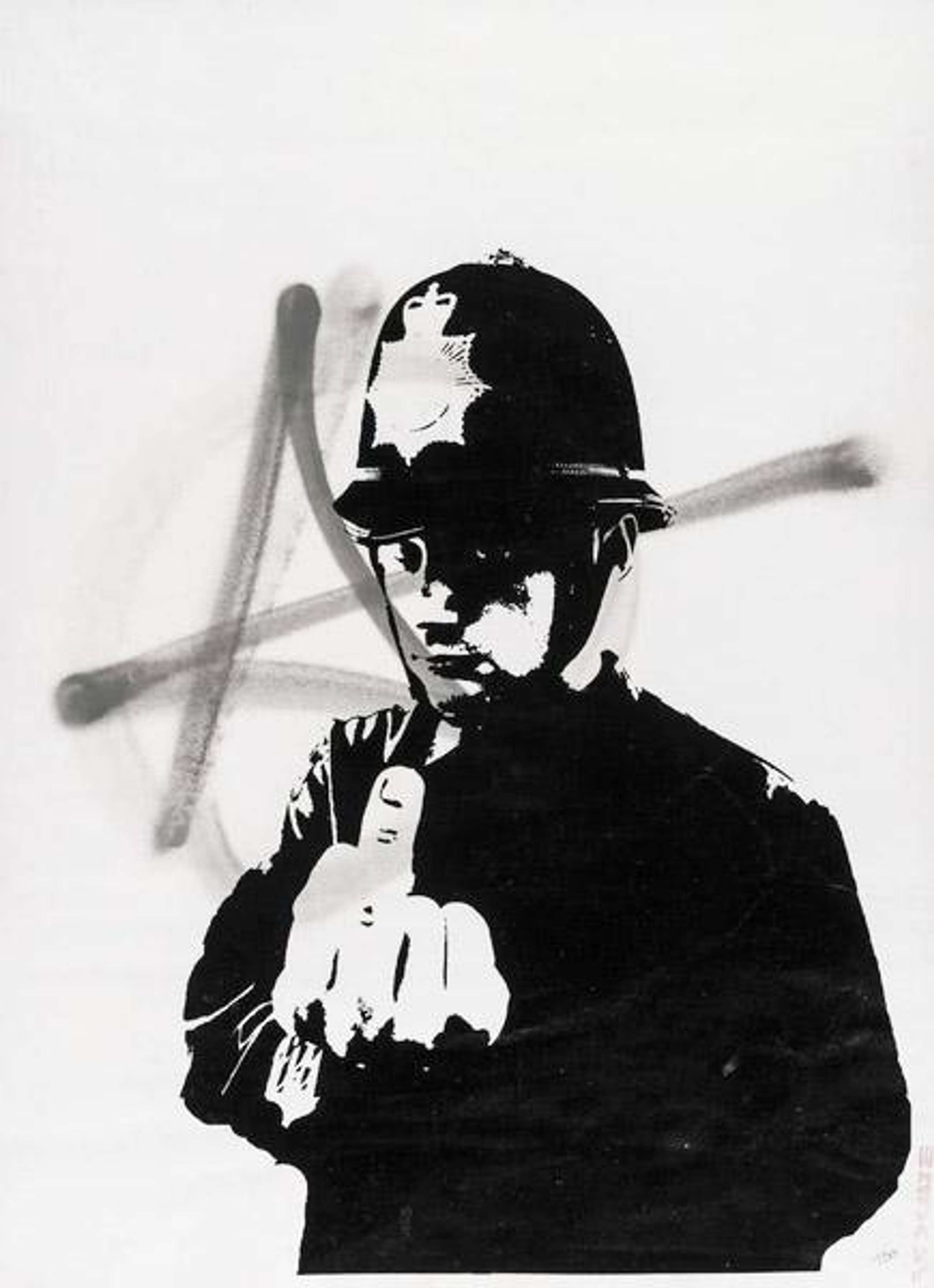
Rude Copper (Anarchy)

Rude Copper (Anarchy)
Signed Mixed Media
Banksy
£70,000-£110,000
$140,000-$220,000 Value Indicator
$130,000-$200,000 Value Indicator
¥650,000-¥1,030,000 Value Indicator
€80,000-€120,000 Value Indicator
$710,000-$1,120,000 Value Indicator
¥14,210,000-¥22,340,000 Value Indicator
$90,000-$140,000 Value Indicator
There aren't enough data points on this work for a comprehensive result. Please speak to a specialist by making an enquiry.
59 x 42cm, Edition of 250, Mixed Media
Auction Results

Track auction value trend
Meaning & Analysis
Rude Copper is one of Banksy’s most iconic, earliest images, released in 2002 as a signed screen print in black with unique grey spray painting, edition of 250.
Rude Copper (Anarchy) is a screen print on wove paper made by the internationally acclaimed street artist Banksy in 2002. The print comes in an edition size of 250 and shows a British policeman, identifiable from his uniform and helmet. The policeman is captured from waist up holding his middle finger up out in front of him. The policeman is staring out of the composition and appears to be swearing at the viewer of the print.
The policeman is rendered using a stencil and black and white spray paint, a characteristic feature of Banksy’s visual language. Banksy adopted the stencil technique in the 1990s as it enabled him to produce simple images in a fraction of the time and thus helped the artist evade being captured by the police.
Banksy often depicts police officers in his artworks which are always steeped in irony as many of the artist’s graffiti artworks and murals are illegal and have to be produced in secret. In Rude Copper (Anarchy) an ‘A’ is spray painted in grey over the policeman’s face. The letter, which stands as a visual representation for anarchy, hints at Banksy's anti-establishment values which are frequently reflected in the artist’s works.